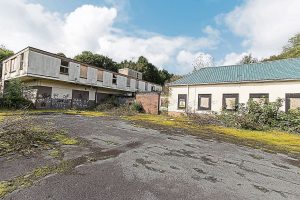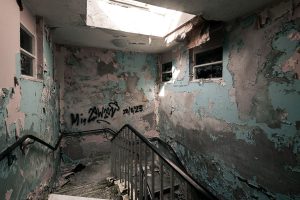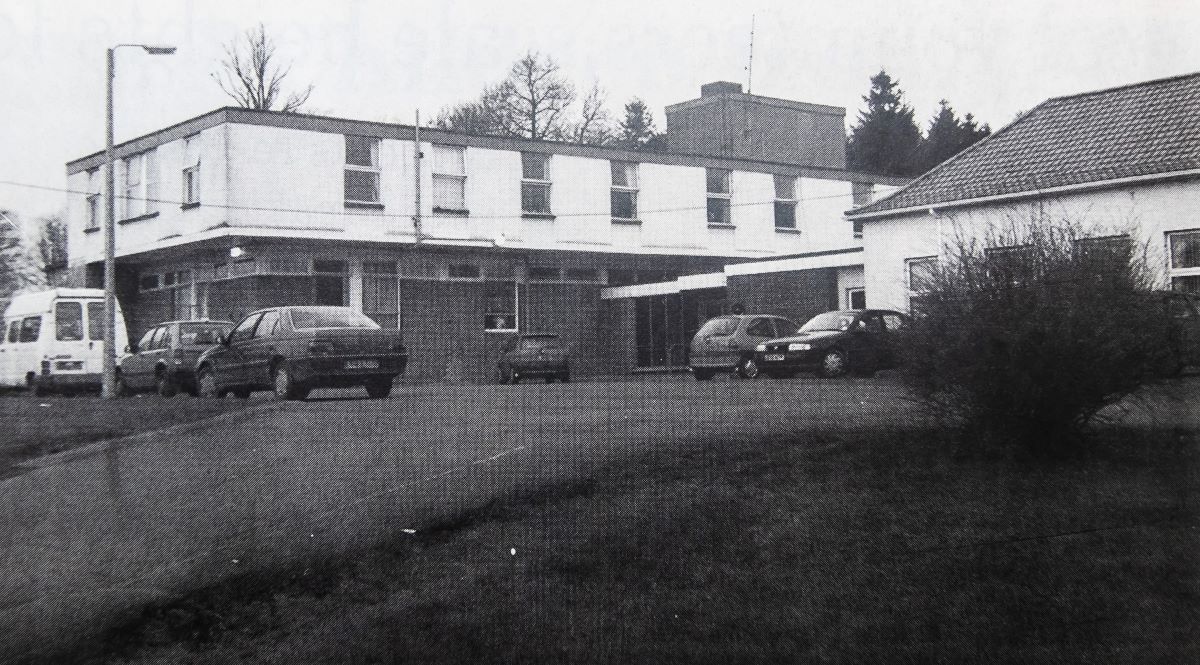There’ll be many local people of a certain age who will recall a warning from their parents: “If you don’t be good, you’ll be sent to Coneywarren.”
Located just outside Omagh, hidden within a wooded hill, Coneywarren Children’s Home operated from the late 1940s until the turn of the century, housing orphans and youngsters who were experiencing difficulties in their young lives.

Coneywarren certainly suffered from a stigma, hence that warning from parents in the Omagh district, who used the threat of sending their kids there as a means of keeping them behaved.
However, the children’s home was more relaxed and conventional than other ‘regimented’ facilities of a similar nature, and many of its former residents have pleasant memories of their time at Coneywarren.
Before it became a children’s home, the Coneywarren site was home to a Crown Court solicitor named Greer.
The Greer family was known for their generosity, hosting an annual fete for local workhouse children.
During these events, the children were shown around the Greers’ estate and gardens, treated to a plethora of tea, currant cakes, and buns, and allowed to play games and races before returning to the workhouse.
Following the deaths of the solicitor and his wife, the land was sold to World War I veteran, Colonel Percy Beresford Fleming, later the High Sheriff for Tyrone.
During his time at the site after the war, Colonel Fleming took charge of food distribution in Northern Ireland during the 1940s.

In June 1948, the Welfare Committee for Tyrone lobbied to purchase the land and build a new children’s home on the site of the former house.
The site opened later that year under the Health and Social Care Trust, aimed at housing orphaned children or kids placed under child protective services due to their behaviour or their parents’ actions.
It was a huge building, comprised of 16 bedrooms which spanned two floors of the complex.
There were classrooms, a kitchen, and a large office space to accommodate the staff and Trust employees.
Unlike some institutions, the children at Coneywarren were not segregated from the outside world.
They attended school in town via buses marked with the ‘Coneywarren’ logo.
However, some of the children felt embarrassed by the branding, as recalled by a former resident: “I remember feeling so ashamed at getting out of the van, because I thought the stigma was so great, thinking that everybody will know that I’m a bad person because of it.”
‘I loved it’
Another former resident has fond memories of the home: “You were allowed out to the pictures, you had pocket money, you had clothes allowance. I never had that in my life,” they said.
“I settled in there, and I really loved it.”
Coneywarren ran mostly without incident, with the exception of a small fire in 1956, which saw the children evacuated from their beds.
The blaze burned a large hole in the floor of the matron’s sitting room and through to the kitchen ceiling below. Thankfully, there were no serious injuries or significant damage to the building.
Elizabeth Liken, a resident at Coneywarren for two years during the 1980s, shared fond memories of her stay.
“I liked picking the bluebells and snowdrops that grew in the forest beside the lane going to the house,” she said. “We got to play a lot outdoors when we were at Coneywarren, and they even had horses on the site that we were allowed to get on.
“I remember one brown and white pony in particular which I was really fond of called Jingles.
“My brother, who was four years younger than me, and I shared a room together for the first year, but in the second year, we were given our own rooms.
“The rooms all had a bed and dressing table. All the bedding and curtains were the same, and we were allowed to keep our personal belongings in our rooms, like toys and photos.
“I remember that all of the rooms were painted with the same cream-white colour,” she added.
In an average day at Coneywarren, the children would get the marked buses to school and when they returned they were given the afternoon to play outside, provided they completed their homework.
“I remember going in a white mini bus to school and during break time we were given a club biscuit or fruit,” said Elizabeth.
“When we got home we got a drink and a pancake, and then we went straight into homework.
“However, we had to do it ourselves which I wasn’t able to do as I couldn’t read or write until the age of six.
“Afterwards, until tea time, we played outdoors or sometimes we’d play pool indoors.”
She added, “Tea was in the dining room at 5pm, then more playing, or if it was a Thursday, I was allowed to go out for girl scout brownies.
“I attended there, and got my tea with the ‘Brownies’. But when I came home after 5pm, it was always fish on a Thursday, and I hated it, so I never took tea that day. I would have been given a biscuit instead.
“ Bedtime was usually between 7-8pm, but it depended on age, and bath night was a Saturday to prepare for Sunday school in church.”
By the turn of the century, the legacy of Coneywarren was soon to meet its end as new talks emerged of building a modernised home in Fermanagh.
Work commenced in April 2002 on two new facilities in Enniskillen and a building beside the existing Coneywarren house as part of a plan to improve current residential child care services in terms of accessibility and quality.
By 2005, the Coneywarren site fell silent and the bedrooms, classrooms and offices were left completely abandoned.







